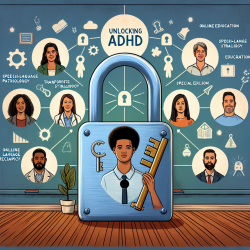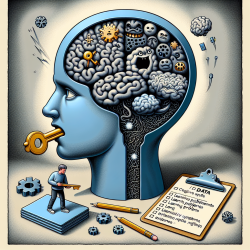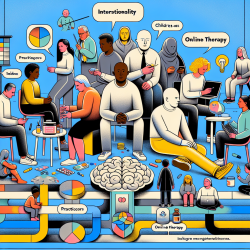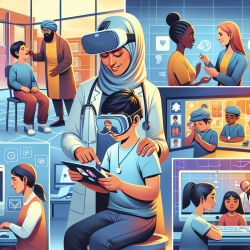Empowering Neurodiagnostic Personnel: Elevate Your Skills and Expertise

The field of neurodiagnostics is a dynamic and rapidly evolving area of healthcare. With the increasing complexity of neurological disorders and the advancement of technology, the role of neurodiagnostic personnel has never been more critical. The recent publication of the "Guidelines for Qualifications of Neurodiagnostic Personnel" by the American Clinical Neurophysiology Society (ACNS), the American Association of Neuromuscular & Electrodiagnostic Medicine (AANEM), the American Society of Neurophysiological Monitoring (ASNM), and ASET—The Neurodiagnostic Society provides a comprehensive framework for the qualifications and competencies required for neurodiagnostic personnel.As a practitioner in the field, understanding and implementing these guidelines can significantly enhance your skills and improve patient outcomes. This blog will explore the key recommendations from the guidelines and provide actionable steps to help you advance your career in neurodiagnostics.
Key Recommendations from the Guidelines
The guidelines outline specific qualifications and competencies for various roles within the neurodiagnostic field. Here are some of the key recommendations:
- Education and Certification: The guidelines emphasize the importance of formal education and certification. For example, a Neurodiagnostic Assistant (NDA) should have a high school diploma or equivalent and complete the ASET online course, LTM 100: Introduction to LTM for EMU Personnel. For more advanced roles, such as Neurodiagnostic Technologist I, an associate degree or enrollment in a CAAHEP-accredited ND program is preferred.
- Experience: Practical experience is crucial for developing the necessary skills. For instance, a Neurodiagnostic Technologist I should have at least 20 hours of observation in an EMU or ND laboratory under the direction of a credentialed ND technologist.
- Ongoing Education and Competency Maintenance: Continuous education and competency assessments are vital for staying updated with the latest advancements in the field. The guidelines recommend a minimum of 15 hours of education in neurodiagnostics each year for technologists.
- Supervision Levels: The guidelines define different levels of supervision, ranging from direct technical supervision to general technical supervision, depending on the complexity of the procedures being performed.
Implementing the Guidelines to Improve Your Skills
Here are some practical steps you can take to align your practice with the guidelines and enhance your skills:
1. Pursue Formal Education and Certification
Investing in formal education and obtaining relevant certifications is a foundational step. Enroll in accredited programs and complete courses that are recognized by professional bodies such as ASET and ABRET. This will not only enhance your knowledge but also make you more competitive in the job market.
2. Gain Practical Experience
Seek opportunities to gain hands-on experience under the supervision of experienced technologists. This could include internships, volunteer positions, or shadowing experienced professionals in an EMU or ND laboratory. Practical experience is invaluable for developing the technical skills required for neurodiagnostic procedures.
3. Engage in Continuous Education
Stay updated with the latest advancements in neurodiagnostics by attending workshops, conferences, and webinars. Participate in continuing education programs and earn CEUs to maintain your certifications. This will ensure that you are well-versed in the latest techniques and technologies in the field.
4. Participate in Competency Assessments
Regularly participate in competency assessments to evaluate your skills and identify areas for improvement. These assessments can be conducted in-house or through professional organizations. They provide valuable feedback and help you stay proficient in your practice.
5. Understand and Adhere to Supervision Levels
Familiarize yourself with the different levels of supervision outlined in the guidelines and ensure that you are working within the appropriate supervision level for your role. This will help maintain the quality and safety of neurodiagnostic procedures.
Encouraging Further Research
The guidelines also highlight the importance of ongoing research and development in the field of neurodiagnostics. As a practitioner, you can contribute to the advancement of the field by:
- Participating in research studies and clinical trials.
- Collaborating with academic institutions and research organizations.
- Publishing your findings in peer-reviewed journals.
- Attending and presenting at professional conferences.
Engaging in research not only enhances your professional development but also contributes to the collective knowledge and progress of the neurodiagnostic community.
Conclusion
The "Guidelines for Qualifications of Neurodiagnostic Personnel" provide a robust framework for the education, certification, and ongoing competency of neurodiagnostic professionals. By implementing these guidelines, you can elevate your skills, improve patient outcomes, and advance your career in this dynamic field. To read the original research paper, please follow this link:
Guidelines for Qualifications of Neurodiagnostic Personnel: A Joint Position Statement of the American Clinical Neurophysiology Society, the American Association of Neuromuscular & Electrodiagnostic Medicine, the American Society of Neurophysiological Mo.
Citation: López, J. R., Ahn-Ewing, J., Emerson, R., Ford, C., Gale, C., Gertsch, J. H., Hewitt, L., Husain, A., Kelly, L., Kincaid, J., Kise, M., Kornegay, A., Moreira, J. J., Nuwer, M., Schneider, A., Stecker, M., Sullivan, L. R., Toleikis, J. R., Wall, L., & Herman, S. (2023). Guidelines for Qualifications of Neurodiagnostic Personnel: A Joint Position Statement of the American Clinical Neurophysiology Society, the American Association of Neuromuscular & Electrodiagnostic Medicine, the American Society of Neurophysiological Monitoring, and ASET—The Neurodiagnostic Society. Journal of Clinical Neurophysiology, 40(4), 271-285. https://doi.org/10.1097/WNP.0000000000001004










